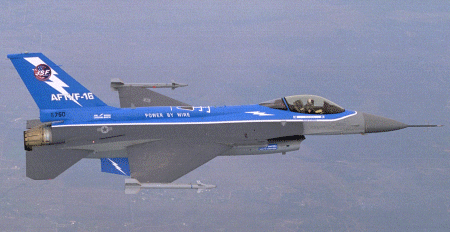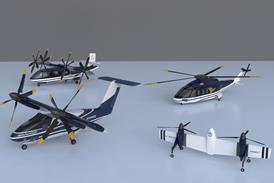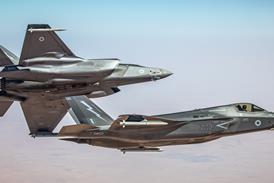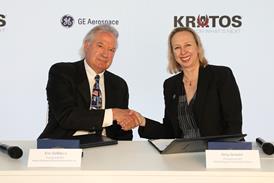Lockheed Martin's F-16 power-by-wire technology demonstrator made its maiden flight on 24 October, making it the first aircraft to fly with all-electric flight-control actuation and no mechanical backup.

The flight, about 20 months behind the original schedule, came on the same day as the maiden flight of Lockheed Martin's X-35A Joint Strike Fighter (JSF) concept demonstrator. The company has designed power-by-wire flight controls into its proposed JSF, but the X-35 does not use electric actuation. Instead, the F-16 testbed is being used to reduce the risk associated with the technology.
The power-by-wire demonstration is the last element of the JSF integrated subsystems technology (J/IST) maturation programme to be completed. The hydraulic actuators on all the fly-by-wire F-16's primary flight-control surfaces have been replaced with electric actuators. The system is designed to replicate the original flight control responses and, after the 70min first flight, test pilot Steve Barter indicated that aircraft handling was indistinguishable from that of an unmodified F-16.
Integrated subsystems, including power-by-wire, are set to reduce take-off weight by 6%, vulnerable area by 15%, cut procurement cost by 5% and take 2-3% off life-cycle cost compared with current fighters.
The power-by-wire system consists of a 270V DC engine-driven Hamilton Sundstrand "switched-reluctance" generator, to provide redundancy, and Parker Aerospace electro-hydrostatic actuators on the flaperons, rudder and horizontal stabiliser. Lockheed Martin plans to use the same companies on its production JSF and deliberately delegated much of the development work to its suppliers.
"There was a lot of software development and testing to go through," says programme manager Dennis Eicke. "They struggled with software development, but did a really good job. It just took longer. But they now have a lot of experience to carry forward into JSF engineering and manufacturing development."
Due to the delays, the flight test programme has been curtailed and fewer than 15 flights are expected before the J/IST budget runs out.
Source: Flight International























